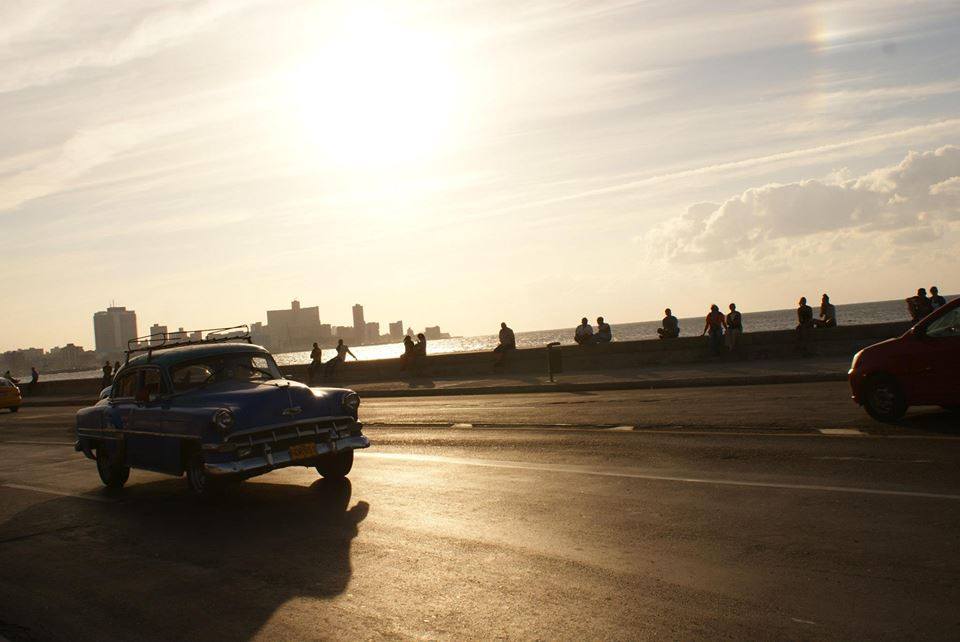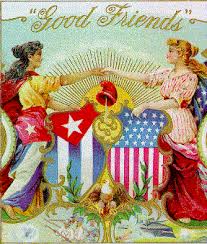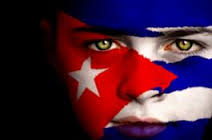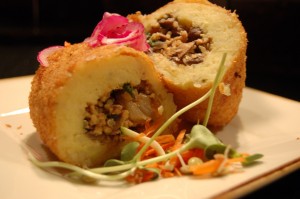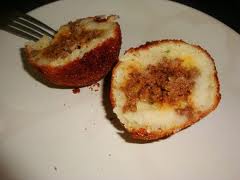PERSONAJES CUBANOS:EL COJO DE LA BOCINA.
¿Pedro? ¿Procopio? ¿Anastasio? ¿Tomás? ¿José Manuel? ¿Pedro Tomás, acaso? Los que lo conocieron o lo vieron al menos alguna vez no recuerdan su nombre; tal vez no lo supieran nunca, y tampoco lo consignaron los que escribieron sobre él. Nadie sabe ya a ciencia cierta la razón de su cojera. Enrique Núñez Rodríguez, en una crónica que dio a conocer en esta misma página, habla de una prótesis de palo en una de sus piernas, «lo que lo hacía, decía el cronista, más interesante en el desempeño de su juglaresca función». Para Eduardo Robreño, en cambio, no hubo pata de palo que valiera y el Cojo solo arrastraba una pierna, mientras que , periodista cubano fallecido en Miami hace un par de años, en las páginas que le dedica en sus memorias todavía inéditas, ratifica la imagen del sujeto que legó Núñez Rodríguez.
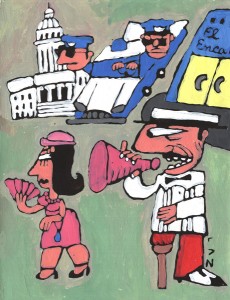
Precisa que no hubo un solo Cojo, sino varios. Escribe en sus memorias:
«Lo que ocurrió fue que el oficio que había inventado el Cojo auténtico, que era el de cronista social callejero, se convirtió en una actividad productiva y existieron varios cojos».
Núñez Rodríguez no va tan lejos, pero concede al personaje en cuestión cierto don de ubicuidad. Como un ser omnipresente, el Cojo se hacía sentir en Galiano y San Rafael, en Infanta y San Lázaro, en los jardines del Capitolio y en el Gran Estadio del Cerro (Estadio Latinoamericano) donde animaba, con su bocina, los juegos entre los eternos rivales, Habana y Almendares, aprovechando los momentos más emocionantes del desafío. Afirmaba Núñez Rodríguez que junto con La Marquesa y El Caballero de París formaba la tríada de los personajes más populares de la capital en aquellos ya lejanos años 40 del siglo pasado.
UNA LEGAL Y OTRA SECRETA.
Durante el primer Gobierno de Batista (1940-1944) existieron en Cuba dos primeras damas. Una, Elisa Godínez, vivía en Palacio a plena luz del día. Batista la conoció cuando él todavía era un soldado que montaba guardia en el portón de la finca del presidente Alfredo Zayas, y ella era una lavandera del Wajay. La otra, secreta, ejercía las funciones de querida del Presidente. Se llamaba Martha Fernández Miranda, una muchacha muy humilde de Buenavista, en Marianao, linda, a quien Batista doblaba descansadamente la edad y de la que se desconoce con exactitud cómo llegó al entorno del Presidente.
Escribe en sus memorias que eso de tener una amante «era lo normal en la época. Lo primero que hacía un cubano de alguna posibilidad era echarse una querida. Sobre todo los políticos, los militares, los profesionales de alguna jerarquía. Tener una querida o dos era entrar en el libro de oro de la sociedad secreta. Todos en algún momento cometimos ese pecado, si se puede llamar pecado a lo que en el fondo era un castigo».
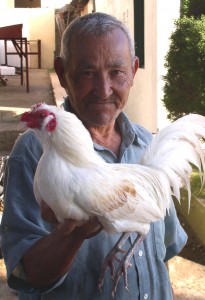
Contó a Ortega el general Manuel Benítez, jefe de la Policía Nacional en el primer Gobierno de Batista, que una tarde Martha se disponía a entrar en El Encanto, la tienda del mundo elegante habanero, cuando de pronto apareció el Cojo, con su pata de palo, la muleta y su bocina y, sin pensarlo dos veces, gritó:
—Se dispone a entrar en el exclusivo establecimiento de Galiano esquina a San Rafael la ilustre dama Martha Fernández Miranda, la muy querida, respetada y bondadosa señora que es orgullo de nuestra sociedad.
En una situación normal, Martha se hubiera sentido muy orgullosa de que el Cojo destacara su presencia, pero ella no era por entonces un personaje público, sino un secreto, aunque todos la conocían y le rendían honores. Los gritos del Cojo, al ponerla en evidencia, la abochornaron y se metió en la tienda como una flecha.
Esa noche, en la intimidad, sigue contando Luis Ortega, le armó una bronca a Batista. Y Batista, a la mañana siguiente, llamó a Palacio al general Manuel Benítez. De muy malas pulgas, le dijo:
—¿Cómo permite usted que ese Cojo miserable ande por ahí insultando a las damas? Me lo agarra, le quita la bocina y lo encierra en un calabozo.
Dicho y hecho. Un par de horas después el Cojo estaba tras las rejas de un calabozo de la estación de policía de la calle Dragones.
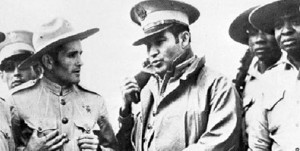
Una semana más tarde Martha se disponía a entrar otra vez en El Encanto y el Cojo, esa vez en forma más rimbombante, volvió a anunciar su presencia. Esa noche, la escena entre Batista y Martha fue de argolla. Lloraba ella de indignación, y el mandatario, molestísimo, dispuso la presencia inmediata del general Benítez en Palacio.
El cuadro, contado en detalles a Luis Ortega por el mismo jefe de la Policía, es indescriptible. Batista estuvo a punto de destituirlo.
—¡Yo le ordené a usted que metiera preso al Cojo…!
Benítez, parado en posición de firme, no entendía ni jota de lo que pasaba. Había cumplido la orden. En verdad, tenía al Cojo preso, pero Batista volvía con su andanada.
—¡Otra vez el Cojo se metió con Martica! ¡Algo intolerable! ¿Qué clase de jefe de Policía es usted?
Benítez salió desconcertado de Palacio. Ya en la Jefatura, movilizó a todas las fuerzas bajo su mando. Ordenó que localizaran al Cojo; al otro Cojo, porque al primero lo tenía entre rejas.
El general Manuel Benítez los agarró a todos, los reunió en su despacho y les dijo lo que tenían que hacer: debían guardar sus bocinas cada vez que vieran aparecer a la querida del Presidente y tragarse cualquier anuncio o comentario.
Después que Batista abandonó la Presidencia de la República, el 10 de octubre de 1944, se divorció de Elisa Godínez y se vio obligado a partir con ella, mitad por mitad, su fortuna, calculada entonces en 22 millones de pesos.
Contrajo matrimonio de inmediato con Martha Fernández. Podía ella, como esposa legítima, acompañar a Batista a plena luz del día, lo que no pudo hacer hasta entonces. Pero estaba desconsolada. Se había quedado con las ganas de ser Primera Dama de la nación.
Con su zumbante ironía escribe el periodista Luis Ortega en sus memorias que Batista dio el golpe de Estado de 10 de marzo de 1952 para que ella pudiera serlo de veras.
CiroBianchiRoss/InternetPhotos/TheCubanHistory.com
Personajes: El Cojo de la Bocina.
The Cuban History, Hollywood.
Arnoldo Varona, Editor
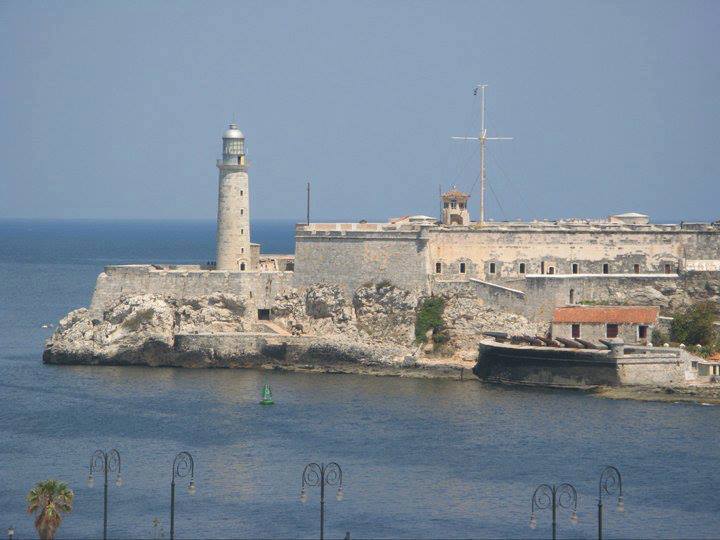
CHARACTERS: THE CRIPPLE OF THE HORN
Peter? Procopio ¿? Anastasio ¿? Do you drink? Did José Manuel? Did Peter Thomas, perhaps? Those who knew him or saw him at least once not remember his name might not ever know, and neither consigned those who wrote about it. Nobody knows for sure and the reason for the lameness. Enrique Nunez Rodriguez, a chronic announced on this page speaks of a prosthetic stick in one of his legs, “what he did, said the reporter, the more interesting in the performance of its function minstrel.” For Eduardo Robreno, however, there was no wooden leg worth and Cojo dragged one leg only, while Luis Ortega, a Cuban journalist who died in Miami a couple of years ago in the pages devoted to him in his memoirs yet unpublished, confirms the picture of the person who bequeathed Nunez Rodriguez.

Accurate Luis Ortega there was no one I pick, but several. He writes in his memoirs:
“What happened was that the office he had invented the Lame authentic, which was the street social chronicler, became a productive activity and there were several lame.”
Nunez Rodriguez is not going that far, but given the character in question a gift of ubiquity. As an omnipresent being, the Cripple felt in Galiano and San Rafael in Infanta and San Lazaro, on the Capitol grounds and the Grand Stadium del Cerro (Latin American Stadium) where encouraged, with its horn, the games between the eternal rivals Havana and Almendares, taking advantage of the most exciting challenge. Nunez Rodriguez stated that along with La Marquesa and the Knight of Paris formed the triad of the most popular in the capital in those distant years and 40 of the last century.
Do not minimize it. That reporter could do very well walking thing. He had talent, grace and memory of an elephant that allowed him to grasp a face only see him once and always have the name on his lips timely and accurate information that propalaba or hidden at will. I did not need more than one speaker to make a modest speaker sometimes dismembered a string phonograph.
With him, the silence could be as lucrative as the word. Because senators of the Republic, representatives to the House, ministers, mayors and councilors at the mention of his name followed by a few adjectives praise, hastened to give a tip to the Lame, who lived by that, and also opened their wallets when the Lame revealed the presence of their wives and alluded to his rank in society. A small fee, that politicians were not reluctant to spring when I take his last silent deceit, his cowardice or cortedades who wanted to pass in silence. Cojo was a connoisseur of his work. Almost a publicist.
The thing worked something like this. Cojo is betting on the outskirts of the Capitol awaiting the opening session of the Senate or the House. He saw approaching, say, Senator Guillermo Alonso Pujol, neither slow nor lazy, shouting: Here comes Guillermo Alonso Pujol, the architect of the permanent renewal … Senator Alonso Pujol Live! It was assumed at that point the wily politician Matanzas and had “touched” the Cripple with a quarter at least, because otherwise all the praise became insults … And so did all the politicians he could hunt.

ONE LEGAL AND OTHER SECRET.
During the first government of Batista (1940-1944) existed in Cuba two first ladies. One, Elisa Godinez, lived at the palace in full daylight. Batista met when he was still a soldier standing guard at the gate of the estate of President Alfredo Zayas, and she was a laundress Wajay. The other, secret, dear performed the duties of the President. Her name was Martha Fernandez Miranda, a very humble girl of Buenavista, in Marianao, cute, whom Batista bent leisurely age and it is unknown exactly how the President came to the environment.
Luis Ortega wrote in his memoirs that have a lover “was normal at the time. The first thing was a Cuban was any chance throw a mistress. Especially politicians, military professionals some hierarchy. Having a mistress or two was to enter the golden book of the secret society. Everyone at some point we committed that sin, if you can call sin what the background was a punishment. ”
Ortega told Gen. Manuel Benitez, head of the National Police in the first government of Batista, one afternoon Martha was about to enter the House, the elegant Havana store in the world, when suddenly the Lame, with his leg stick, crutch, its horn and, without thinking twice, shouted:
He has to enter the exclusive property of San Rafael Galiano corner to the illustrious lady Martha Fernandez Miranda, the much-loved, respected and caring lady who is proud of our society.
In a normal situation, Martha would have been very proud that the Lame highlight their presence, but she was not then a public figure, but a secret, but everyone knew her and pay their respects. The cries of Lame, to put in evidence, abochornaron and went into the store as an arrow.
That night, in private, still has Luis Ortega, he assembled a fight Batista. And Batista, the next morning, he called General Manuel Benitez Palace.

A very bad mood, he said:
– How can I take you miserable that goes around insulting the ladies? Grabs me, takes away the horn and locks him in a dungeon.
Said and done. A couple of hours after the Lame was behind the bars of a cell of the police station Dragons street.
A week later, Martha was preparing to go again in the House and the Lame, this time in a more bombastic, returned to announce their presence. That night, the scene between Martha Batista was ring. She cried with indignation, and the president, molestísimo, ordered the immediate presence of the general Benitez Palace.
The table, told in detail Luis Ortega by the same police chief, is indescribable. Batista was about to dismiss him.
– I ordered you to dip the lame prisoner … !
Benitez, standing at attention, did not understand a word of what was happening. Had refused the order. Indeed, had the Cripple prisoner, but Batista came back with his volley.
– Again the Lame disrespected Marthica! Something intolerable! What kind of police chief are you?
Benitez left baffled the Palace. Already in the Head, mobilized all forces under his command. Locate ordered the Cripple, Lame other, because the first had it behind bars.
Gen. Manuel Benitez seized them all, gathered in his office and told them they had to do: they must keep their horns every time they appear to see the mistress of President and swallow any notice or comment.
After Batista left the Presidency of the Republic on October 10, 1944, Elisa Godinez divorced and was forced from her, half and half, his fortune, then estimated at 22 million pesos.
He married Martha Fernandez at once. Could she, as his lawful wife, to accompany Batista to daylight, he could not do before. But I was heartbroken. He had been with the desire to be First Lady of the nation.
With its buzzing irony writes journalist Luis Ortega in his memoirs that Batista staged a coup of 10 March 1952 so she could be really.
CiroBianchiRoss/InternetPhotos/TheCubanHistory.com
Personajes: El Cojo de la Bocina.
The Cuban History, Hollywood.
Arnoldo Varona, Editor
